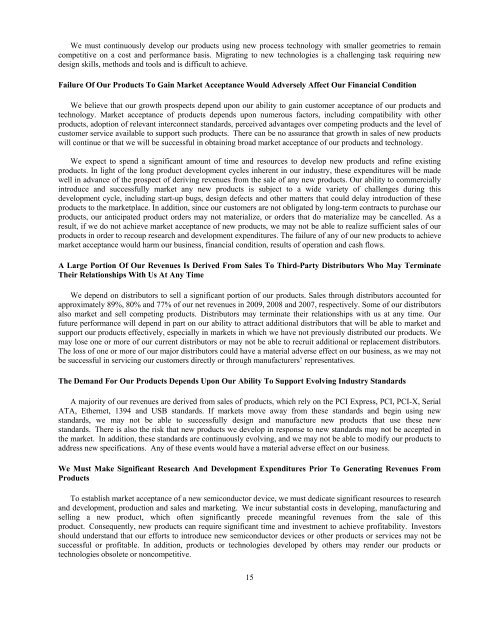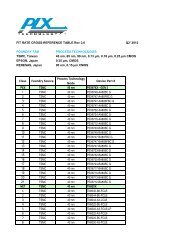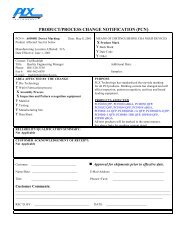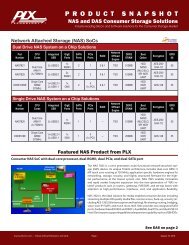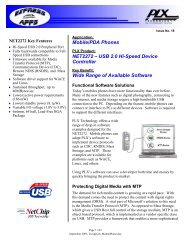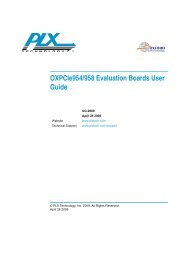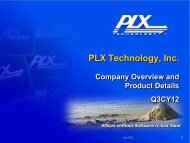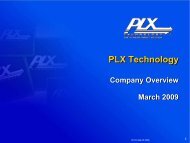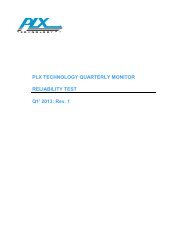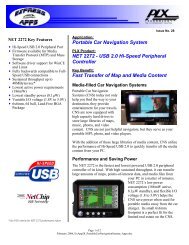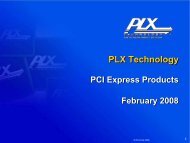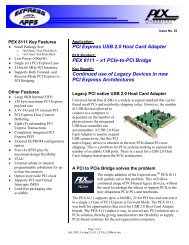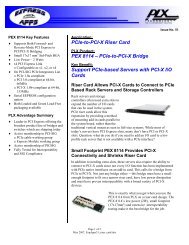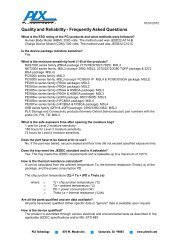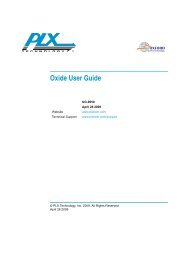the 2009 Annual Report (pdf) - PLX Technology
the 2009 Annual Report (pdf) - PLX Technology
the 2009 Annual Report (pdf) - PLX Technology
You also want an ePaper? Increase the reach of your titles
YUMPU automatically turns print PDFs into web optimized ePapers that Google loves.
We must continuously develop our products using new process technology with smaller geometries to remain<br />
competitive on a cost and performance basis. Migrating to new technologies is a challenging task requiring new<br />
design skills, methods and tools and is difficult to achieve.<br />
Failure Of Our Products To Gain Market Acceptance Would Adversely Affect Our Financial Condition<br />
We believe that our growth prospects depend upon our ability to gain customer acceptance of our products and<br />
technology. Market acceptance of products depends upon numerous factors, including compatibility with o<strong>the</strong>r<br />
products, adoption of relevant interconnect standards, perceived advantages over competing products and <strong>the</strong> level of<br />
customer service available to support such products. There can be no assurance that growth in sales of new products<br />
will continue or that we will be successful in obtaining broad market acceptance of our products and technology.<br />
We expect to spend a significant amount of time and resources to develop new products and refine existing<br />
products. In light of <strong>the</strong> long product development cycles inherent in our industry, <strong>the</strong>se expenditures will be made<br />
well in advance of <strong>the</strong> prospect of deriving revenues from <strong>the</strong> sale of any new products. Our ability to commercially<br />
introduce and successfully market any new products is subject to a wide variety of challenges during this<br />
development cycle, including start-up bugs, design defects and o<strong>the</strong>r matters that could delay introduction of <strong>the</strong>se<br />
products to <strong>the</strong> marketplace. In addition, since our customers are not obligated by long-term contracts to purchase our<br />
products, our anticipated product orders may not materialize, or orders that do materialize may be cancelled. As a<br />
result, if we do not achieve market acceptance of new products, we may not be able to realize sufficient sales of our<br />
products in order to recoup research and development expenditures. The failure of any of our new products to achieve<br />
market acceptance would harm our business, financial condition, results of operation and cash flows.<br />
A Large Portion Of Our Revenues Is Derived From Sales To Third-Party Distributors Who May Terminate<br />
Their Relationships With Us At Any Time<br />
We depend on distributors to sell a significant portion of our products. Sales through distributors accounted for<br />
approximately 89%, 80% and 77% of our net revenues in <strong>2009</strong>, 2008 and 2007, respectively. Some of our distributors<br />
also market and sell competing products. Distributors may terminate <strong>the</strong>ir relationships with us at any time. Our<br />
future performance will depend in part on our ability to attract additional distributors that will be able to market and<br />
support our products effectively, especially in markets in which we have not previously distributed our products. We<br />
may lose one or more of our current distributors or may not be able to recruit additional or replacement distributors.<br />
The loss of one or more of our major distributors could have a material adverse effect on our business, as we may not<br />
be successful in servicing our customers directly or through manufacturers’ representatives.<br />
The Demand For Our Products Depends Upon Our Ability To Support Evolving Industry Standards<br />
A majority of our revenues are derived from sales of products, which rely on <strong>the</strong> PCI Express, PCI, PCI-X, Serial<br />
ATA, E<strong>the</strong>rnet, 1394 and USB standards. If markets move away from <strong>the</strong>se standards and begin using new<br />
standards, we may not be able to successfully design and manufacture new products that use <strong>the</strong>se new<br />
standards. There is also <strong>the</strong> risk that new products we develop in response to new standards may not be accepted in<br />
<strong>the</strong> market. In addition, <strong>the</strong>se standards are continuously evolving, and we may not be able to modify our products to<br />
address new specifications. Any of <strong>the</strong>se events would have a material adverse effect on our business.<br />
We Must Make Significant Research And Development Expenditures Prior To Generating Revenues From<br />
Products<br />
To establish market acceptance of a new semiconductor device, we must dedicate significant resources to research<br />
and development, production and sales and marketing. We incur substantial costs in developing, manufacturing and<br />
selling a new product, which often significantly precede meaningful revenues from <strong>the</strong> sale of this<br />
product. Consequently, new products can require significant time and investment to achieve profitability. Investors<br />
should understand that our efforts to introduce new semiconductor devices or o<strong>the</strong>r products or services may not be<br />
successful or profitable. In addition, products or technologies developed by o<strong>the</strong>rs may render our products or<br />
technologies obsolete or noncompetitive.<br />
15


